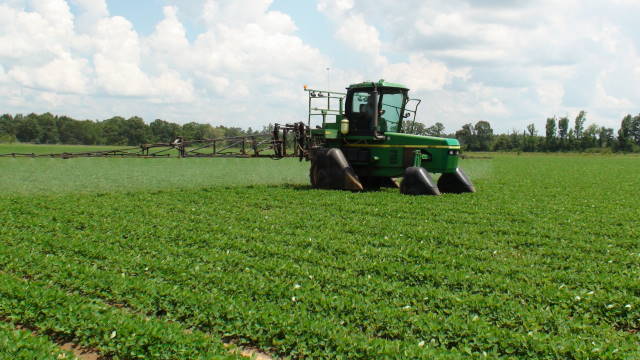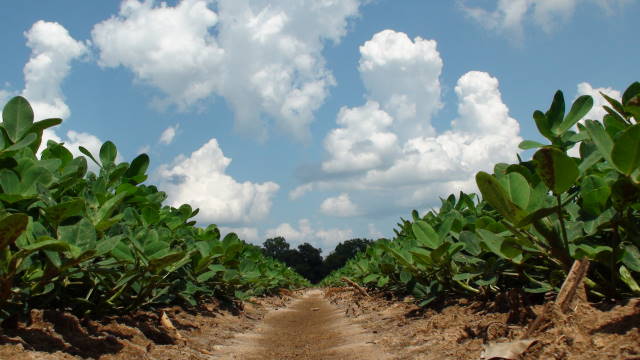Peanuts in Santa Rosa County got off to a dry, slow start, with many fields requiring insecticide treatments for thrips. Now that the typical summer rains have set in, peanuts are growing well with a nice canopy, and have for the most part, overcome the early season thrip damage.
Most peanut farmers have applied the first fungicide application of the season, and are preparing for the second. Consideration should be given to fungicide selection to utilize a product with activity on white mold. The following are comments by Dr. Bob Kemerait, UGA Pathologist, concerning early season white mold control.
There are several important reasons why it is “white mold time”.
- Temperatures are warming considerably as we enter the summer season. As you know, outbreaks of white mold are more severe and are fueled by warmer soil temperatures.
- We appear to be getting into a typical pattern of summer time rain events. Warm soil temperatures and moist conditions are critical ingredients for the development and spread of white mold.
- Our peanut crop is now growing to a point where a small canopy of leaves is present. Higher humidity and periods of leaf-wetness will increase within the canopy as it continues to expand during the season. This warm, moist environment is essential for explosive outbreaks of white mold.
The “backbone” of white mold management remains the use of appropriate fungicides over the period between 60 and 120 days after planting. This is our historical “white mold management block.” However, there has been a revolution in the management of white mold over the past five years. Not only do we have an expanding arsenal of effective fungicides for the management of white mold, e.g., Fontelis and Proline, but the cost of the fungicide tebuconazole has dropped allowing creative new programs.
Based largely on the research from Dr. Tim Brenneman, University of Georgia, we also manage white mold more aggressively. The most obvious changes have been:
- The value of applications of fungicides at night
- The value of banded applications of Proline and Abound within five weeks of planting
- The value of early-season broadcast applications of tebuconazole
As Bob Kemeriat puts it, it is “Much like the old adage from the Civil War, Get their first with the most;” new strategies to manage white mold include tactics to get concentrated amounts of fungicides to the target earlier than we have in the past.
For more information on peanut disease management download the peanut disease control portion of the 2013 UGA Peanut Production Update: 2013 UGA Peanut Disease Update
- 54th Annual Santa Rosa County Farm Tour Goes Virtual - December 11, 2020
- Video Tour of the 2020 Santa Rosa County Peanut Variety Trial - October 9, 2020
- Giant Salvinia – A Highly Invasive Aquatic Plant You Don’t Want Growing in Your Pond - May 29, 2020


